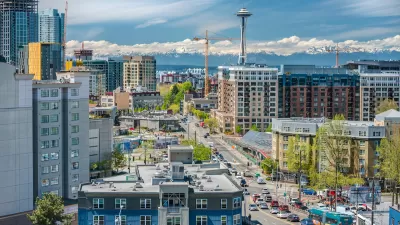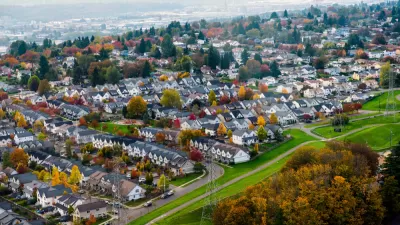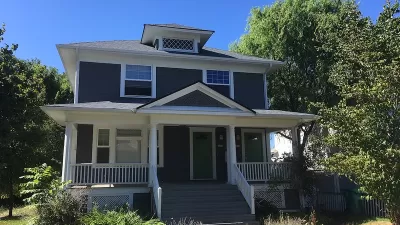Roger Valdez gives his take on the new obstructionism that is dominating public participation and holding up much-needed growth in Seattle and elsewhere.
At the heart of efforts to guide future growth in the city, Valdez sees an irreconcilable, four-man tug-of-war between "labor, neighborhoods, developers, and environmentalists." Faced with proposals that might alter the character of their single-family communities even modestly, neighborhood groups in Seattle staunchly oppose planning that would reduce housing costs, improve transit, make neighborhoods more walkable, and lift redundant legal barriers to development.
It's a dramatic change from the way neighborhood activists used to do business, Valdez argues. "Seattle's neighborhoods are ascendant and they are abusing their power, shifting from fighting for things to fighting against them."
Valdez laments, "What happened? How did earnest, liberal, Birkenstock-wearing activists pushing for parks, play equipment, sidewalks, and kiosks turn into affluent, highly motivated saboteurs of new development, change, and density? Three things happened in the last two decades that shifted neighborhoods from the 'what we want' caucus to the 'what we won't' lobby:"
- The Housing Market – In the absence of developable land, homeowners stand to gain by making their communities more exclusive and scarce.
- Organizing – In the 90s, the Department of Neighborhoods learned to mobilize disadvantaged communities by focusing the discussion on emotionally-charged phrases and images. Now, affluent neighborhoods rally around concerns over "gentrification" to quite the contrary effect.
- A Compliant City Council – Politicians are too eager to satisfy the demands of "a large, affluent, and motivated group of neighborhood activists," even at the expense of healthy community growth.
"This balance of power can't shift without courage, by developers, unions, and environmentalists who must support a louder, stronger voice for dense, transit-oriented neighborhoods, not just intellectual dialogues and power point presentations."
FULL STORY: Seattle neighborhoods fight needed land use reform, density

Alabama: Trump Terminates Settlements for Black Communities Harmed By Raw Sewage
Trump deemed the landmark civil rights agreement “illegal DEI and environmental justice policy.”

Study: Maui’s Plan to Convert Vacation Rentals to Long-Term Housing Could Cause Nearly $1 Billion Economic Loss
The plan would reduce visitor accommodation by 25% resulting in 1,900 jobs lost.

Why Should We Subsidize Public Transportation?
Many public transit agencies face financial stress due to rising costs, declining fare revenue, and declining subsidies. Transit advocates must provide a strong business case for increasing public transit funding.

Paris Bike Boom Leads to Steep Drop in Air Pollution
The French city’s air quality has improved dramatically in the past 20 years, coinciding with a growth in cycling.

Why Housing Costs More to Build in California Than in Texas
Hard costs like labor and materials combined with ‘soft’ costs such as permitting make building in the San Francisco Bay Area almost three times as costly as in Texas cities.

San Diego County Sees a Rise in Urban Coyotes
San Diego County experiences a rise in urban coyotes, as sightings become prevalent throughout its urban neighbourhoods and surrounding areas.
Urban Design for Planners 1: Software Tools
This six-course series explores essential urban design concepts using open source software and equips planners with the tools they need to participate fully in the urban design process.
Planning for Universal Design
Learn the tools for implementing Universal Design in planning regulations.
Smith Gee Studio
Alamo Area Metropolitan Planning Organization
City of Santa Clarita
Institute for Housing and Urban Development Studies (IHS)
City of Grandview
Harvard GSD Executive Education
Toledo-Lucas County Plan Commissions
Salt Lake City
NYU Wagner Graduate School of Public Service





























